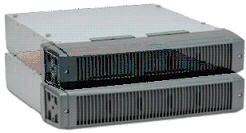Nokia Networks is set to launch LTE network in a box with macro site capacity and coverage to ensure rapid deployment.
The company said Nokia Network in a box will work as a small network for major industrial sites. It also enables public safety communications to be implemented at emergency scenes where wide area network coverage is not available. Telecoms can use the miniature LTE network to bring high-bandwidth connectivity to rural and remote areas.
Nokia Network in a box — based on Nokia Flexi Multiradio 10 Base Station — is a compact macro base station with an integrated core network ready to operate on either FDD or TD-LTE bands, along with built-in ports for external IP connectivity.
Network in a box supports thousands of users, weighs about 40 kg and requires a power supply of less than 1 kW. It can be powered by a car-based inverter or a small portable generator.
It can be used outdoors without an additional cabinet, cooling or shelter. The built-in core network also eliminates the need for related extra equipment or cabling, further saving energy and space.
Telecoms can deploy the field transportable solution within a few minutes as an independent LTE network with full macro site performance, coverage and capacity, once a power supply and antenna are connected.
Deepak Harie, vice president of Systems Integration Services at Nokia Networks, said: “Network in a box allows for easy implementation of a dedicated stand-alone LTE network in next to no time. Nokia Network in a box can be used in multiple ways – to provide network connectivity in remote areas, as a stand-alone communications network for enterprises like oil rigs and to support public safety communications.”
Athonet, one of the partners of Nokia Networks, will be demonstrating Nokia Network in a box during Critical Communications World 2015.
Baburajan K
[email protected]






